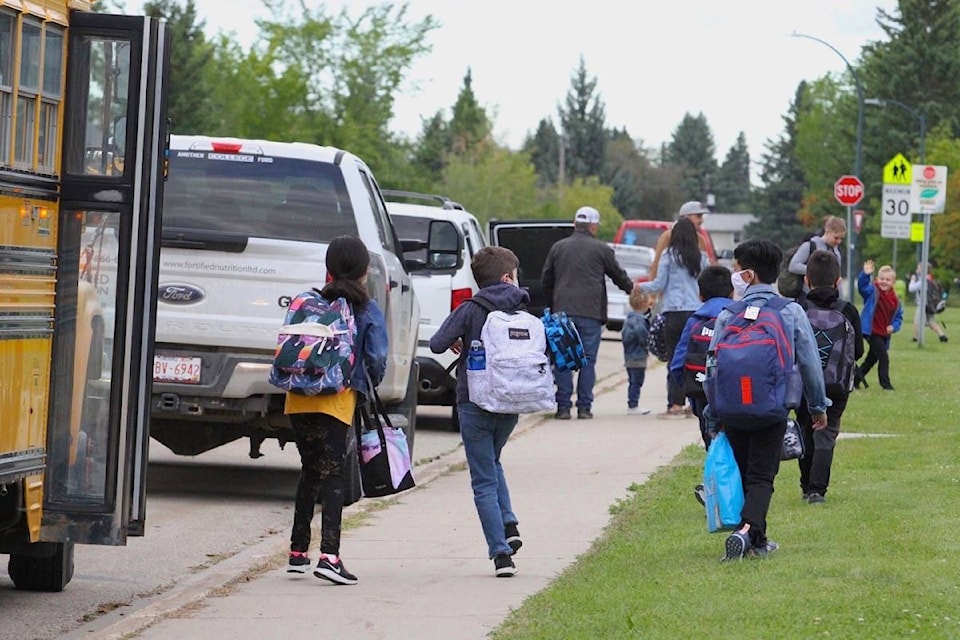Some parents worry that a 75 per cent funding cut to the Alberta School Councils’ Association is the province’s way of punishing the members’ decision to exclude charter schools from its definition of public education.
In October, the association, which advocates for public education and provides supports, training and resources to parent councils, chose to define public education as public, francophone and separate school systems — and excluded charter schools.
President Brandi Rai said a week ago, the association found out it would only get $170,000 in annual funding after requesting $690,000 in June, a one per cent increase from last year.
“We know that this government really does appreciate parent choice in education, and supports charter streams and independent streams, so there is this worry that we’ve been penalized. The timing does not sit well with everyone,” Rai said.
She said the letter from Alberta Education explained the decision was made as a result of cost-cutting recommendations in the 2019 MacKinnon Report on Alberta’s finances.
“So we’re going to continue to believe that it’s a fiscal problem, and not an advocacy, or position, problem. We’re going to go forward in good faith that the ministry will continue to work with us and listen to parents.”
A statement from Colin Aitchison, press secretary for Education Minister Adriana LaGrange, said the MacKinnon panel recommended that government reduce the proportion of funding directed to administration and system supports to ensure a greater percentage of funds goes directly to classrooms.
“As such, we are bringing the Alberta School Councils’ Association funding in line with that of other education stakeholder organizations, like the College of Alberta School Superintendents and the Alberta School Boards Association.
“Any savings between ASCA’s 2019-20 school year grant and their 2020-21 school year grant will be redirected to where it can make the biggest impact on our students, our classrooms,” Aitchison said.
Rai said the association is waiting for that $480,000 announcement.
“We need some sort of transparency around what they’re doing with that money and when it’s going to be released to students,” Rai said.
Related:
Checking in with parents through provincewide survey
Lindsay Thurber High School up to nine COVID-19 cases
Alberta parents share opinions about schools reopening
She said 85 per cent of the non-profit association’s funding comes from the province, and the group has had a collaborative, and good relationship with the current ministry, which makes its decision not to confer with the association “such a big disconnect.”
“For a government that has said repeatedly how much they value parents, for them to take away a significant amount of the funds that support the parents and education, it’s a blow.”
She said hundreds of school councils have been seeking support during the pandemic, and the association has served Albertans for less than a dollar per student.
Government reminded the association of its $250,000 in taxpayer-funded reserves, and a projected $87,000 from its membership to make the transition.
But some of that money was used during the past four months it operated without funding, and money must be maintained as a nonprofit to meet legal obligations during operational changes, she said.
“Not having that funding for parents’ voice in education is a significant challenge that we now have to face.”
She said parents should talk to their school board trustees, MLAs and LaGrange if they are concerned about the funding cut.
Meanwhile, Rai said the association will continue to serve those who have the most invested in Alberta’s public education system — parents — who were recently surveyed about how they were doing during the pandemic.
Almost 22,000 people responded, with good representation from cities, towns and rural areas. Data will be released in the coming weeks.
“We gather that collective voice. We don’t want there to be a gap. We know that if there’s a gap, student success is at risk, because the primary indicator of student success is actually parent engagement and involvement.”
szielinski@reddeeradvocate.com
Like us on Facebook and follow us on Twitter
